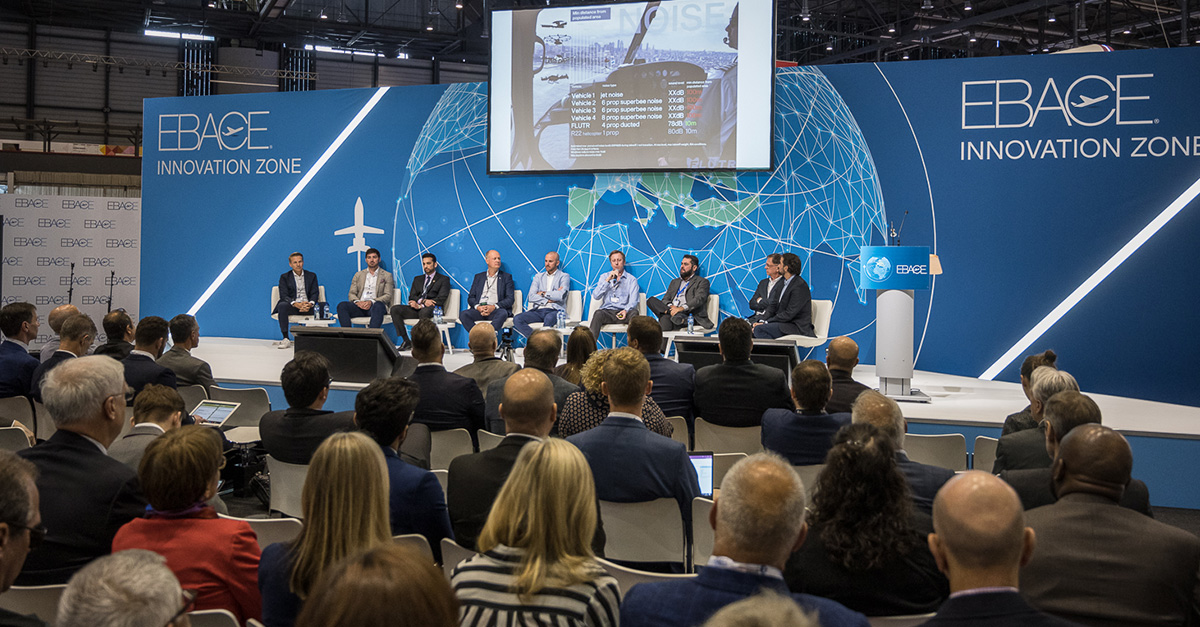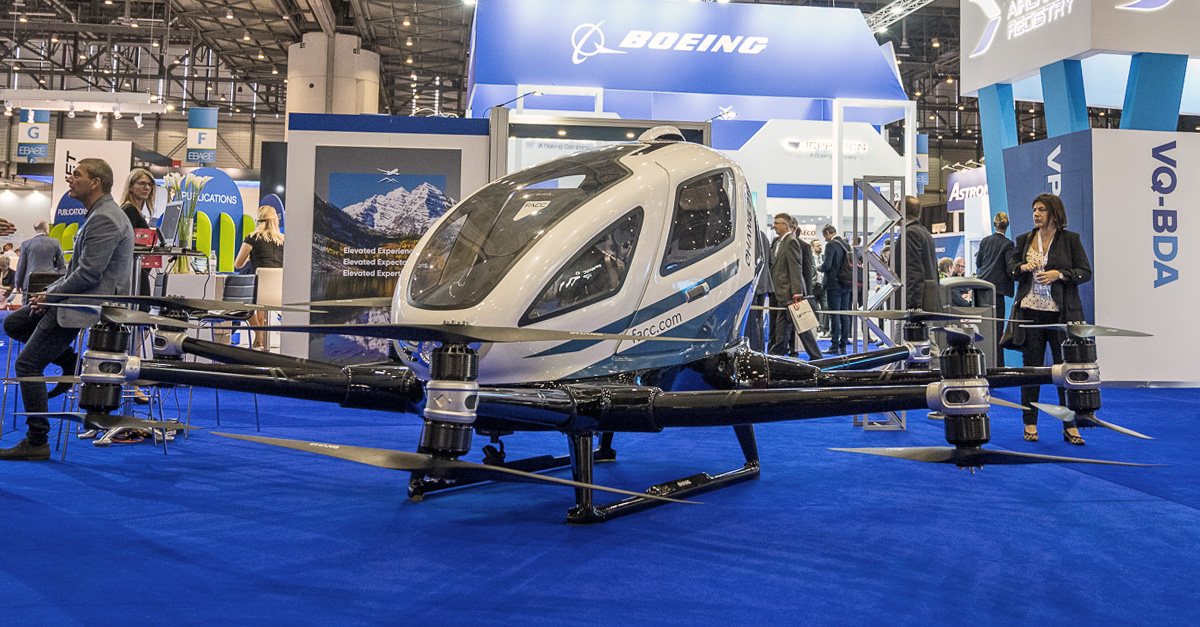EBACE2019 Speakers Survey Spectacular Variety of eVTOL Aircraft Concepts
23 May 2019

In a few short years, electric vertical takeoff and landing (eVTOL) has gone from a dream to a fast-growing new sector, where aviation’s “big iron” manufacturers and tech startups are investing more than $1 billion a year. Companies of all sizes, in many countries, are developing an amazing diversity of vehicles and urban air mobility concepts that can complement business aviation.
“This space is growing exponentially. What these companies are doing is incredible, and it’s very exciting,” said Cyrus Sigari, co-founder of jetAVIVA, while moderating a panel on eVTOL and urban air mobility at the 2019 European Business Aviation Convention & Exhibition (EBACE2019).
There are today at least 120 companies worldwide working on eVTOL vehicles. Engineers and entrepreneurs from eight of those companies showed off their concepts in the 22 May panel. They are taking wildly different approaches – in engineering and in their business models – at different stages of development.
In fact, bringing an eVTOL solution to market is “way harder” than introducing a new model of a traditional airframe, because, as Sigari said, “you have to build at least four different business units: manufacturing, certification, training and services.”
Converging Tech Trends
Investment in eVTOL has surged because of a convergence of technology trends. Better battery technology is clearly driving innovation. Related to battery life is distributed electric propulsion, the same technology that powers recreational quadcopter drones. Finally, the inexpensive and advanced control systems that were developed for drones also have applications to eVTOL passenger aircraft.
Any eVTOL solution has to deal with the same set of physics and economics challenges: powering the vehicle, limiting noise, integrating with existing airspace, developing ground infrastructure and consumer attitudes about safety, among others.

Differences in Design
Some companies, like FLUTR, are solving these challenges with tilt rotors that provide vertical lift and then adjust to provide thrust moving the vehicle through the air. Others, like EHang, are using dedicated rotors mounted vertically or horizontally.
The range of the intended mission determines many aspects of the aircraft’s design. A few eVTOL aircraft intended for intercity missions, like those being developed by Lisa Airplanes and Pegasus Universal Aerospace, have wings. Other vehicles, like Volocopter’s multicopter, are intended for short-range, intercity missions.
While companies are designing very different airframes, many are alike in pursuing what Sigari called a “full-stack operator” model. Recognizing the value of data and direct access to customers, startups and aircraft OEMs are both developing eVTOL vehicles as part of integrated consumer mobility services.
“We want to sell the ride directly to you,” said Pascal Traverse, general manager for autonomy research at Airbus, which is developing eVTOL solutions. “We don’t want to be left out of that business.”
Regulation and Infrastructure
Building a vehicle and developing a ride-booking app is one side of the technical challenge. The other is integrating eVTOL traffic with ground infrastructure and highly regulated airspace.
“What we learned early on is that it’s not only about the business model,” said Christian Bauer, head of business development at Volocopter. “That’s why we always approach cities and regulators first, because we have to start and land somewhere.”

